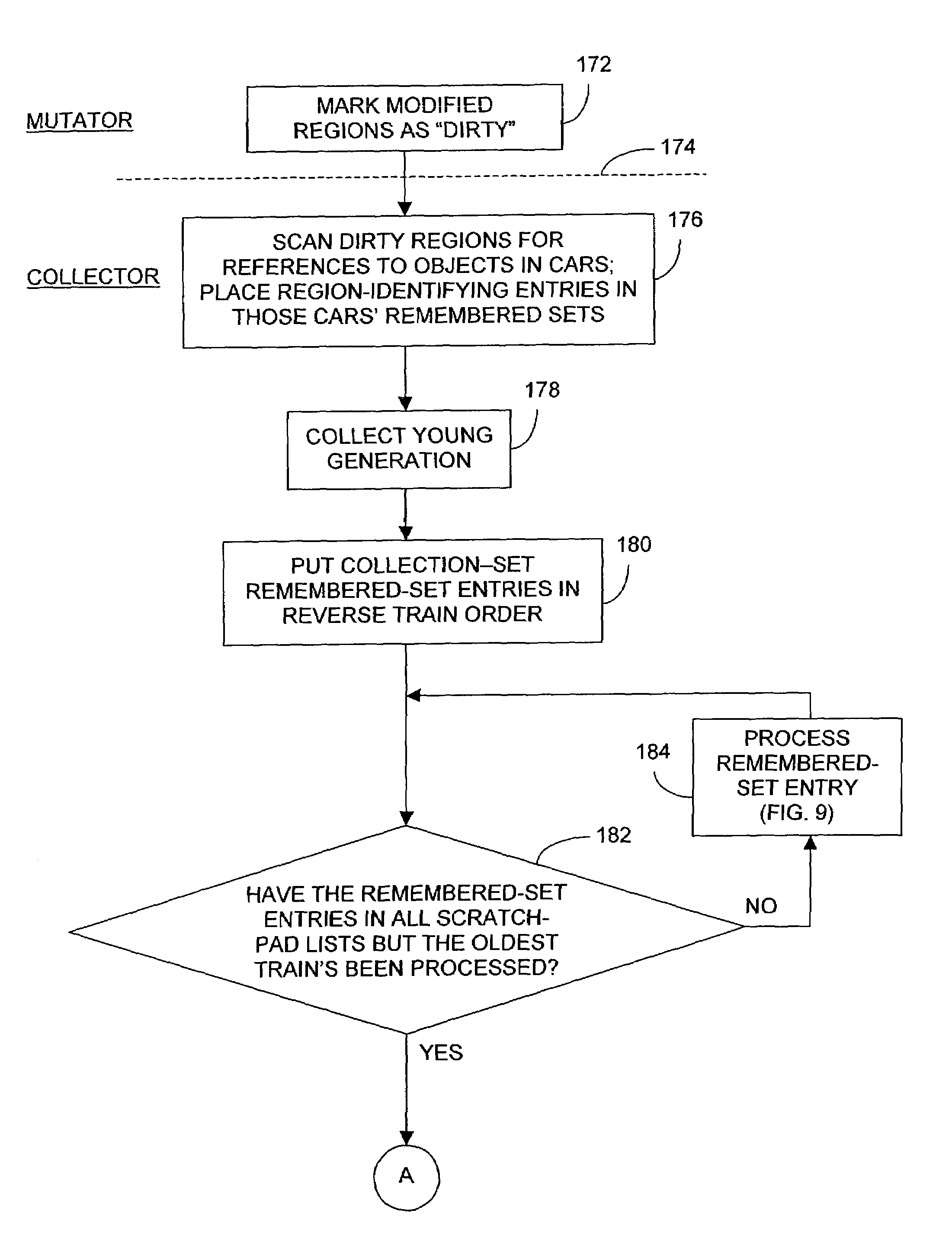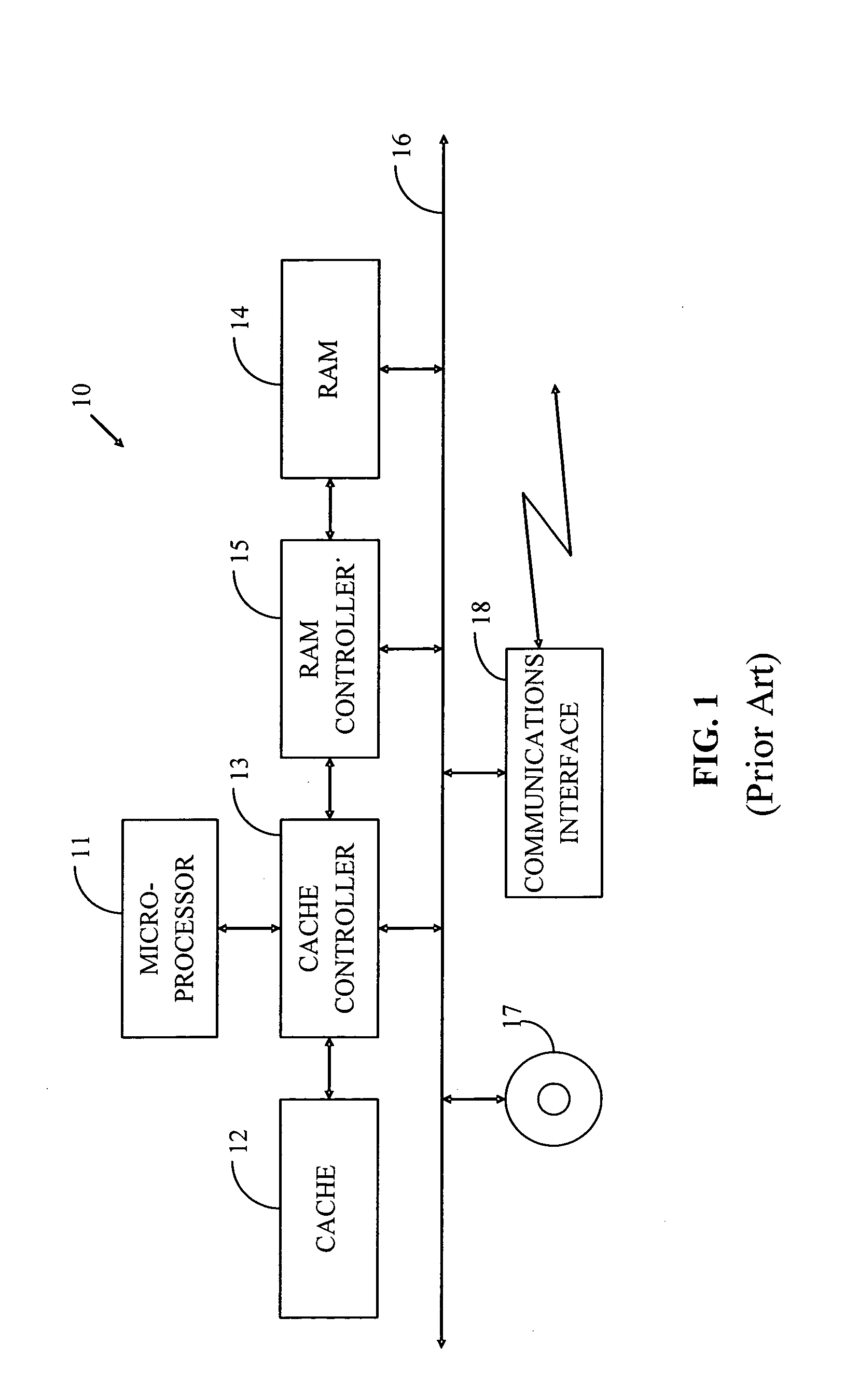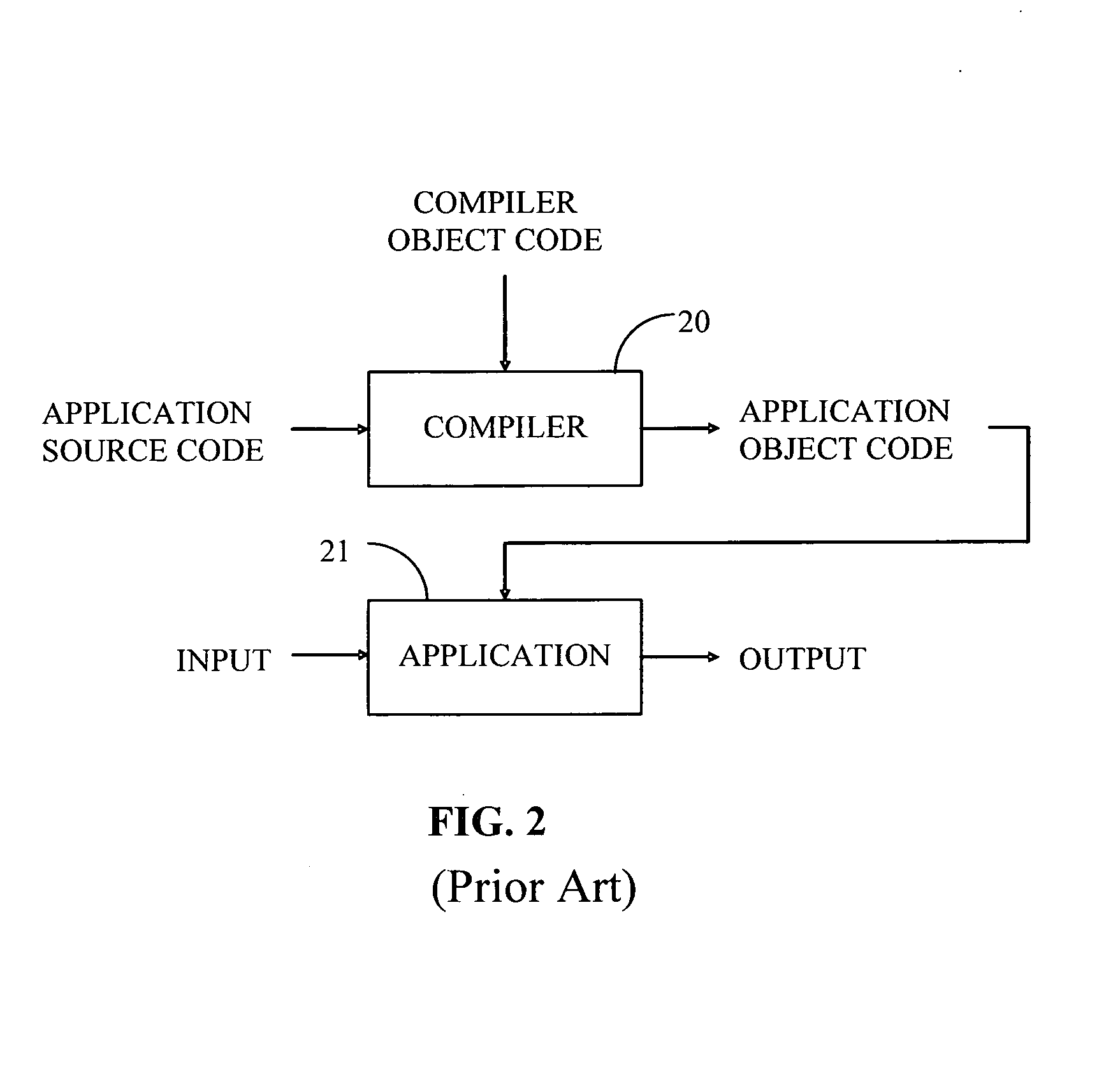Merging trains in a collector based on the train algorithm
a technology of merging trains and collectors, applied in the field of memory management, can solve the problems of breaking such cycles of futile collection, causing delays in collecting space occupied by objects in erstwhile garbage-only trains, and reducing overhead costs, so as to reduce overhead costs, outweigh the cost of delays
- Summary
- Abstract
- Description
- Claims
- Application Information
AI Technical Summary
Benefits of technology
Problems solved by technology
Method used
Image
Examples
Embodiment Construction
[0110]The present invention is directed to garbage collectors that employ the train algorithm, but the train algorithm can be implemented in collectors whose operational sequences depart significantly from the sequence that FIGS. 8–11 above illustrate. Although the sequence there illustrated contemplates executing an entire collection increment in a single interval dedicated only to collection activity, there are ways of spreading a collection increment over multiple intervals. Alternatively, most or all of the collection increment can be performed concurrently with mutator operation, although, as was indicated above, this tends to be somewhat complex. Additionally, although the train algorithm is usually implemented in a multi-generational collector in which, as was described above, a larger, old generation is managed in accordance with the train generation, whereas as a smaller, young one is not, there is no reason in principle why collectors that use the train algorithm need to b...
PUM
 Login to View More
Login to View More Abstract
Description
Claims
Application Information
 Login to View More
Login to View More - R&D
- Intellectual Property
- Life Sciences
- Materials
- Tech Scout
- Unparalleled Data Quality
- Higher Quality Content
- 60% Fewer Hallucinations
Browse by: Latest US Patents, China's latest patents, Technical Efficacy Thesaurus, Application Domain, Technology Topic, Popular Technical Reports.
© 2025 PatSnap. All rights reserved.Legal|Privacy policy|Modern Slavery Act Transparency Statement|Sitemap|About US| Contact US: help@patsnap.com



